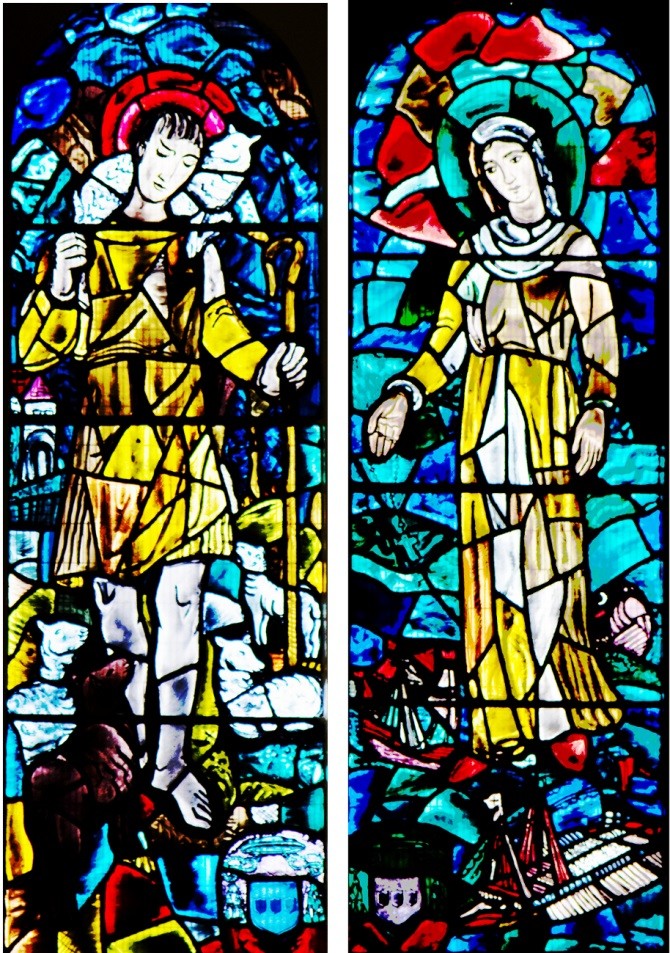Evie Hone's Treasures in Greystones
Agatha Mansfield
The Holy Rosary Church in Greystones, consecrated in 1903, has many beautiful stained glass windows. A preservation order on the church in the Wicklow County Development Plan, 1999, names the ‘interior including the Evie Hone windows.’
Two stained glass windows, representing Our Lady of the Rosary and the other the Good Shepherd are on the aisles. These are real treasures, designed by the internationally acclaimed stained glass artist and painter, Evie Hone (1894 - 1955). They have been in situ since 1948.

The Good Shepherd window inspired the poet Brian Power, a priest of the diocese, to write the following:
Your tunic, magnetic gold,
has drawn me near, but you look fretful, shepherd,
with all those woolly bleaters clamouring to be led
and a fat old ewe wrapped round your shoulders.
It’s a black sheep
gets to nuzzle your knee and pulls
your eyes downward perhaps to guard the errant -
or rather to protect the little one
differentfrom a heedless flock?
Evie Hone was bom in 1894 in Co. Dublin. She was crippled by paralysis when she was 11 years old. On a visit to Assisi in 1911, she became interested in stained glass. She trained in London and Paris. From 1924 onwards she exhibited in Dublin, England, France and the USA in various media. In 1937 she converted to Catholicism and her work took on a more religious tone. Evie Hone along with Mainie Jellett were the first artists to introduce art style cubism to Ireland. This style of square (cube) stained glass can be seen in her work. She is most famous for The Crucifixion and Last Supper (1949) in Eton College Chapel, England.
Evie Hone worked at An Tur Gloine (1935-44) studio. She opened her own studio at Marley Grange in Rathfarnham (1949-1952). In 1938 Evie was commissioned to do a large window for the Irish pavilion at the New York World Fair. The first sketch design is on display in the C.I.E. office in O’Connell Street, Dublin.
In tempering her abstract training, Evie Hone was influenced not only by French artists like Rouault but also by late medieval Irish carvings which she loved to draw. The echoes of medieval Irish sculpture are frequently to be found in her larger windows particularly in traceries in Gothic windows. I love to contemplate as often as I can her three exquisitely tender windows, Madonna and Child, St. Patrick and St. Brigid in the Catholic church at Blackrock, Co. Dublin, which were completed shortly before her death in 1955.
Sources
De Breflhy, Brian, Ireland: A Cultural Encyclopaedia, Thames and Hudson, 1982
Irish Stained Glass. The Irish Heritage Series, Eason & Son Ltd., Dublin. 1977
Parish of Holy Rosary and St. Kilian’s Magasine, 2006, Greystones, Co. Wicklow.